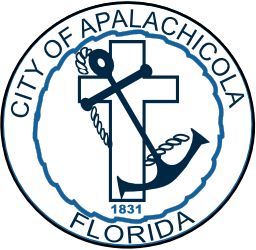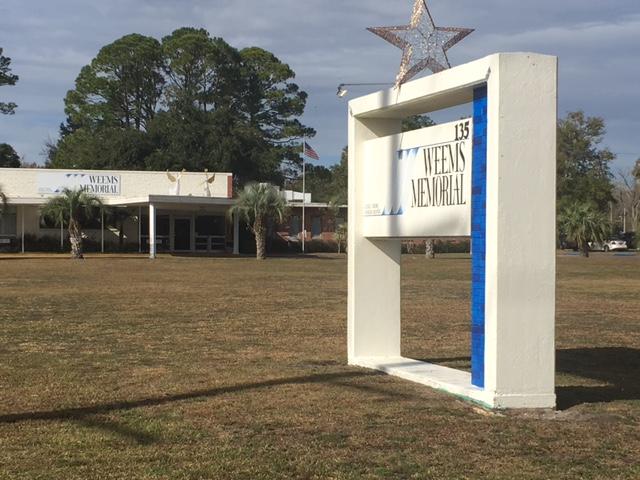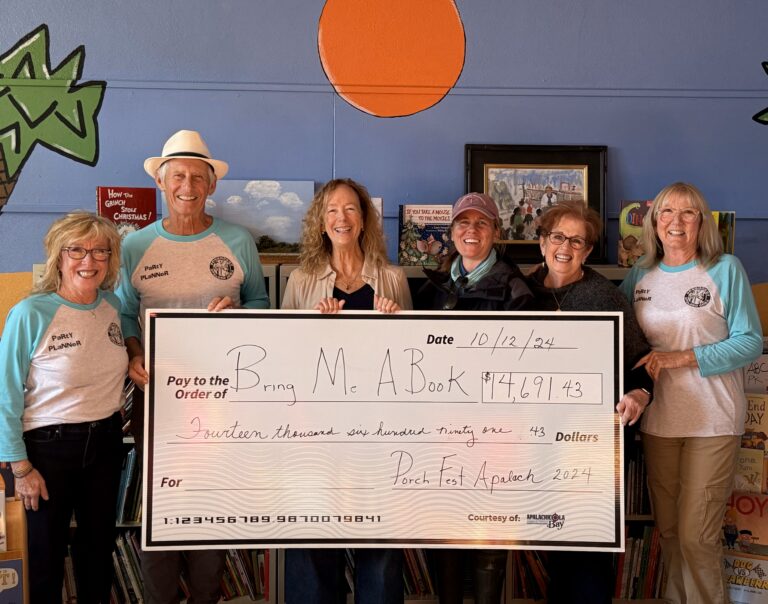Legacy Post Disclaimer
This is a #Legacy post imported from The Apalachicola Time’s previous platform. If you’re experiencing issues with this article, please email us at news@nevespublishing.com.
County budget grows by double digits
County commissioners have signaled they plan to keep the millage rate unchanged, which during a year which saw a double-digit increase in the tax base, means they’ll spend about an additional $1.8 million in ad valorem tax proceeds.
Without disagreement following their budget workshop July 21, commissioners gave their preliminary consent to a roughly $84 million county budget, of which about $14.5 million are property tax proceeds.
This compares to a $77.3 million budget last fiscal year, of which about $12.8 million were proceeds from property taxes.
The reason the county is able to see such a growth in spending while keeping the millage rate unchanged has to do with the first big surprise of the morning, delivered by Finance Director Erin Griffith.
She noted that in contrast to early good faith estimates from Property Appraiser Rhonda Skipper’s office that the county tax base would grow to $2.47 billion, it would in fact be increasing to about $2.65 billion, a jump in taxable value of about 13.6 percent.
Had the county commission wanted to keep spending unchanged, they could have adopted the rolled-back rate of 4.9046 mils, which would have yielded the same total of property tax proceeds as the current year, or roughly $13 million.
Instead, the county is so far planning to stick with its 5.4707 millage rate, which will yield about $14.5 million in property tax proceeds, or about 11.54 percent more than the rolled-back rate.
With budget deliberations not wrapping up before mid-September, at least two county commissioners signaled they may be willing to lower the millage rate, which they are allowed to do from the rate specified on the TRIM notices set to go out in the weeks ahead.
“We have to try to find a compromise and medium here,” said Smokey Parrish, in comments delivered after Sheriff A.J. Smith unveiled a $6.6 million, whose $600,000 increase was the largest chunk of a total of $2 million in increased spending.
“We’re the persons that have to levy those taxes, that’s the job we were elected for,” said Parrish, in voicing cautious support for the sheriff’s expanded spending. “It’s tough and we have to do what we have to do and make it work for everybody.”
“We’ve kind of been behind the times, and the sheriff is trying to address that, I understand that,” he said. “But we also have to look at impacts to taxpayers.”
Chairman Ricky Jones said he expects he and his colleagues will be taking a closer look at the numbers in the weeks ahead.
“It’s now our job to actually look at the budget because we can always decrease it at this point,” he said. “I think we’ll see some decreases in some line items and some dollar amounts as we continue to look at it.”
With Noah Lockley unable to attend due to illness, but participating via Zoom, the commissioners opened by reviewing a PowerPoint presentation by Smith, who stressed that it had been six years since he had asked for any new positions. Included in his budget are the addition of a new position in narcotics, and one with traffic control.
He said the nationwide jump in overdoses has been steady over the last three years. “Unfortunately our county is in line with that,” he said.
He said that in 2021 there were nearly 60 suspected drug-related deaths, and that the first half of 2022 has seen a trend to reach or surpass that.
He said that the new narcotics officer is just one part of a stepped-up campaign to increase community awareness through social media with the help of a campaign overseen by the Northwest Florida Health Network as well as its funding of a community outreach coordinator “We’d love to see more people going in for help,” said Smith. “Even if we touch one person and change their life we’ve affected a larger population.”
He said the new traffic position will address a growth in traffic and more fatalities on the county’s roadways.
“The more visible we are, the more we’re going tor reduce crime,” said the sheriff.
He said he plans to ask the cities to partner with the sheriff’s office on traffic control.
Smith said food costs at the jail have risen by 12.6 percent, while medical costs have dropped.
He also noted that over the last two decades, the department has shrunk from 91 full-time staffers to 82 in 2022.
“We’re providing a higher level of service,” he said. “We have a really dedicated team.”
Among the purchases the sheriff wants to make are devices and training that could help in an active shooter situation. “We want to be prepared, we want to be trained,” said Smith. “Our primary goal is to stop people from being killed and treat people who are injured.
“We are employing new training techniques for deputies, and we want to have equipment to engage them,” he said. “I certainly don’t want it to happen but I can’t predict the future.”
The other constitutional officers – Skipper, Tax Collector Rick Watson, Supervisor of Elections Heather Riley and Clerk of Courts Michele Maxwell – all saw either tiny increases or decreases, due in most cases to changes in the cost of overhead.
The second largest increase to the budget was about $340,000 due to pay increases in year two of the five-year implementation schedule.
The county is facing a 2024 deadline to make sure everyone is at least at minimum wage of $15 per hour.
In 2021-22, the first year of implementation, a lot of workers had to be brought up to that minimum, and so with nearly $428,000 in additional costs, that year was more expensive than will be in the latter four years.
The budget also saw a transfer of about $334,000 in road paving funds, which will mean about $66,800 will be spent per district through September 2023.
Prior to this spending, Jones’ district had about $152,000 in its fund, Bert Boldt about $226,000, Lockley about $406,000, Parrish about $372,000 and Jessica Ward about $297,000.
Griffith said health insurance costs will by about 3.99 percent, considered an exceptionally low increase. With the addition of insuring new positions, the county’s costs in this area will increase by about $161,000.
Other large budget increases were in more spending to cover the county’s contribution to the Florida Retirement System, an additional $140,000; an additional $12,000 for solid waste; and $110,000 more for parks and recreation to cover the growing number of parks brought online in the county.
The balance in the Health Care Trust Fund will grow by nearly $1.9 million, with the Weems Memorial Hospital Fund increasing by about $2.15 million, and the Tourist Development Fund grew by almost $3.270 million due to the additional 1 percent levy.




Meet the Editor
David Adlerstein, The Apalachicola Times’ digital editor, started with the news outlet in January 2002 as a reporter.
Prior to then, David Adlerstein began as a newspaperman with a small Boston weekly, after graduating magna cum laude from Brandeis University in Waltham, Massachusetts. He later edited the weekly Bellville Times, and as business reporter for the daily Marion Star, both not far from his hometown of Columbus, Ohio.
In 1995, he moved to South Florida, and worked as a business reporter and editor of Medical Business newspaper. In Jan. 2002, he began with the Apalachicola Times, first as reporter and later as editor, and in Oct. 2020, also began editing the Port St. Joe Star.